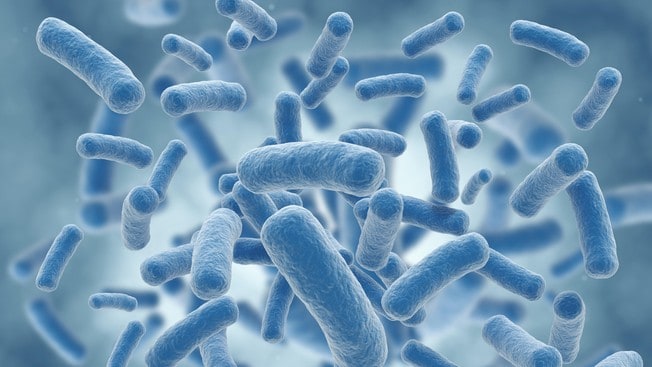Many bacteria use specialized toxins to attack and infect other cells. Scientists at EPFL and the University of Bern have now modeled a major such toxin with unprecedented resolution, uncovering the way it works step-by-step.
In order to infect other cells, many bacteria secrete a type of toxin that punctures the membrane of the target cell and form a pore; as a result, the cell dies. These “pore-forming toxins” share structural features that are strongly linked to the way they work. A major pore-forming toxin is aerolysin, used by bacteria that cause humans gastroenteritis, deep-wound infections, and sepsis. Using cutting-edge microscopy techniques, scientists at EPFL and the University of Bern have created the most detailed structural model of aerolysin, showing how it penetrates a cell in stages. The work is published in Nature Communications.
Pore-forming toxins, or PFTs, are proteins that are secreted by bacteria onto target cells, e.g. in the gut of a human. Once secreted, the PFTs latch onto the cell’s membrane and begin to form a tube-like structure, penetrating through it – this is the actual pore. With its membrane punctured by multiple PFTs, the cell can no longer maintain its internal pressure and chemical balance with its external environment, and self-destructs.
Microbiologists and structural biologists have focused on PFTs for decades to develop strategies against them. However, this requires a detailed understanding of PFTs, which, so far, has been difficult to achieve because of the limitations of microscopy technologies.
Using a new, cutting-edge technology, the lab of Gisou van der Goot at EPFL, working with the lab of Benoît Zuber at the University of Bern, have been able to produce the most detailed model of a PFT called aerolysin. Aerolysin is produced by the bacterium Aeromonas hydrophila, and is the “founding member” of a major family of PFTs found across all kingdoms of living organisms. The bacterium itself infects humans, causing gastroenteritis, deep-wound infections, and sepsis.
The scientists took advantage of a recently developed form of photography called “direct electron detection”. This technique can form images from electrons coming off a sample, which allows unprecedented resolution.
The team visualized aerolysin molecules by combining direct electron detection with cryo-electron microscopy. This type of microscopy can look at biological molecules in their natural state and conformation, thus providing highly accurate information and high resolution. Indeed, the scientists were able to visualize aerolysin with a resolution of 3.9-4.5 Å (0.39-0.45 nm), which is virtually at the scale of individual atoms.
But more importantly, the visualization method was able to see aerolysin at work, capturing it like a time-lapse. When aerolysin attacks a cell, it is secreted as a single molecule from the bacterium. As it forms a pore through its target cell’s membrane it undergoes three distinct structural changes, called the “prepore”, “post-prepore” and “quasipore” states.
The new method was able to take high-resolution snapshots of each state, uncovering previously inaccessible insights about the link between its structure and function. For example, when aerolysin penetrates the target cell, it forms what structural biologists call a “beta-barrel”, a tough structure that allows aerolysin to rivet itself on the target cell and punch a hole through its membrane like a piston.
“What we have found here is very likely to apply to the entire aerolysin family, other PFTs, and perhaps even prion-like proteins,” says Gisou van der Goot, whose group has been working on aerolysin for years through Ioan Iacovache. Iacovache is now at Benoît Zuber’s lab at the University of Bern, where some of the aerolysin images were taken and processed.
The findings can prove crucial in the current efforts to combat antibiotic resistance by offering the information needed for the development of new drugs.
This work involved a collaboration between EPFL’s Global Health Institute and the University of Bern (Laboratory of Experimental Morphology), with contributions from the FEI Company (The Netherlands), EPFL’s Institute of Bioengineering, the Universidade Federal do Rio de Janeiro, and the Swiss Institute of Bioinformatics. It was funded by the Swiss National Science Foundation, the Conselho Nacional de Desenvolvimento Científico e Tecnológico of Brazil.
Reference
Iacovache I, De Carlo S, Cirauqui N, Dal Peraro M, van der Goot FG, Zuber B. Cryo-EM structure of aerolysin variants reveals a novel protein fold and the pore formation process. Nature Communications 13 July 2016. DOI: 10.1038/NCOMMS12062


